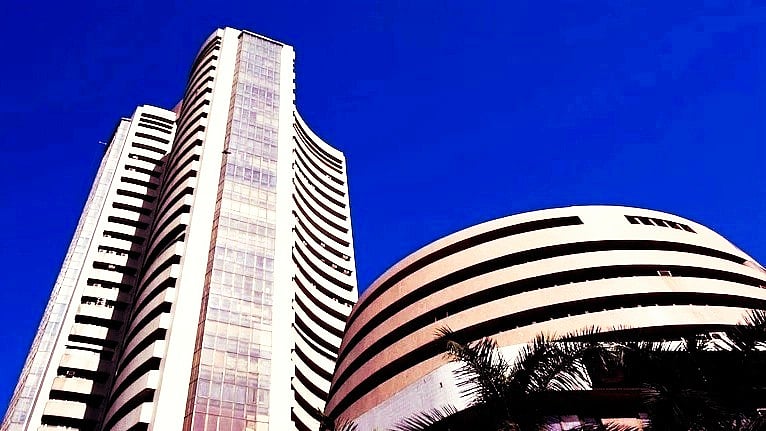The Indian stock markets witnessed a brutal selloff on Monday, wiping out Rs 14 lakh crore worth of Dalal Street in a single trading session as the Sensex sank 2,227 pts. At the heart of this market bloodbath lies a renewed round of global disruption, sparked by U.S. President Donald Trump’s sweeping tariffs on imports—an aggressive return to trade protectionism that has set off alarm bells across financial markets worldwide.
The market tumbled as the carnage over high U.S. tariffs and the retaliation by other countries raised fears of a full-fledged trade war. This threatens to hit supply chains, pricing, and confidence across continents. Globally, markets are being rattled by extreme levels of uncertainty. The fear is not just about tariffs but about unpredictability—about not knowing how far this disruption will go, or whether it will be resolved diplomatically or escalate into something worse. Though the broader impact on India may be somewhat contained compared to export-heavy economies, the volatility has arrived at our doorstep.
Investors should tread cautiously through this fray, focusing more on domestic-oriented themes, sectors, and companies less vulnerable to global shocks. A rebound in these segments is likely when the chaos eventually settles. But therein lies the deeper concern—no one knows when that will settle, or what may come next in this chaotic realignment of global trade flows.
The impact of this global stress is already being felt across middle-class households. For salaried professionals, pensioners, and small investors who have steadily built portfolios through SIPs or direct equity, the hit is both financial and emotional. These are not just market numbers; they are dreams and responsibilities—school fees, EMIs, future weddings, ageing parents, medical needs. The rupee’s weakening past ₹ 87 to the U.S. dollar only adds pressure.
Imports become costlier, inflation risk rises, and the daily cost of living feels tighter. In moments like these, the most sensible thing to do is often the simplest—wait and watch. This is not the time to give in to FOMO (fear of missing out) or attempt to average investments in haste. Rash decisions can deepen financial stress rather than reduce it. With global volatility and a weaker rupee, there’s every possibility of a renewed uptick, especially in fuel, technology products, and services with dollar dependencies. Goldman Sachs now pegs a U.S recession at a 45% probability, which could affect India’s growth-sensitive sectors like manufacturing, IIT services, and exports.
This, in turn, may affect hiring sentiment and wage growth, leading to more cautious spending by middle-class consumers. All eyes are now on the Reserve Bank of India’s Monetary Policy Committee, whose decision is expected this Wednesday. There’s growing anticipation of a rate cut, especially with inflation appearing under control. If the RBI does cut rates, it may bring temporary relief to home loan borrowers and support consumer sentiment. But given the global chaos, the central bank might just as well hold its ground, choosing stability over stimulus.
In all of this, what the middle class needs is clarity and calm. This is not the moment to panic sell or exit markets impulsively. SIPs must stop them now could lock in losses and miss out on the long-term power of compounding. In fact, for those with a long horizon and appetite, this is a good time to review portfolios and even consider selectively adding quality stocks at more reasonable valuations. The key is discipline, not desperation.
Dr. Srinath Sridharan, Corporate Advisor & Independent Director on Corporate Boards. Author – Family and Dhanda
Disclaimer: This column does not constitute investment advice. Please consult a SEBI-registered investment adviser.
